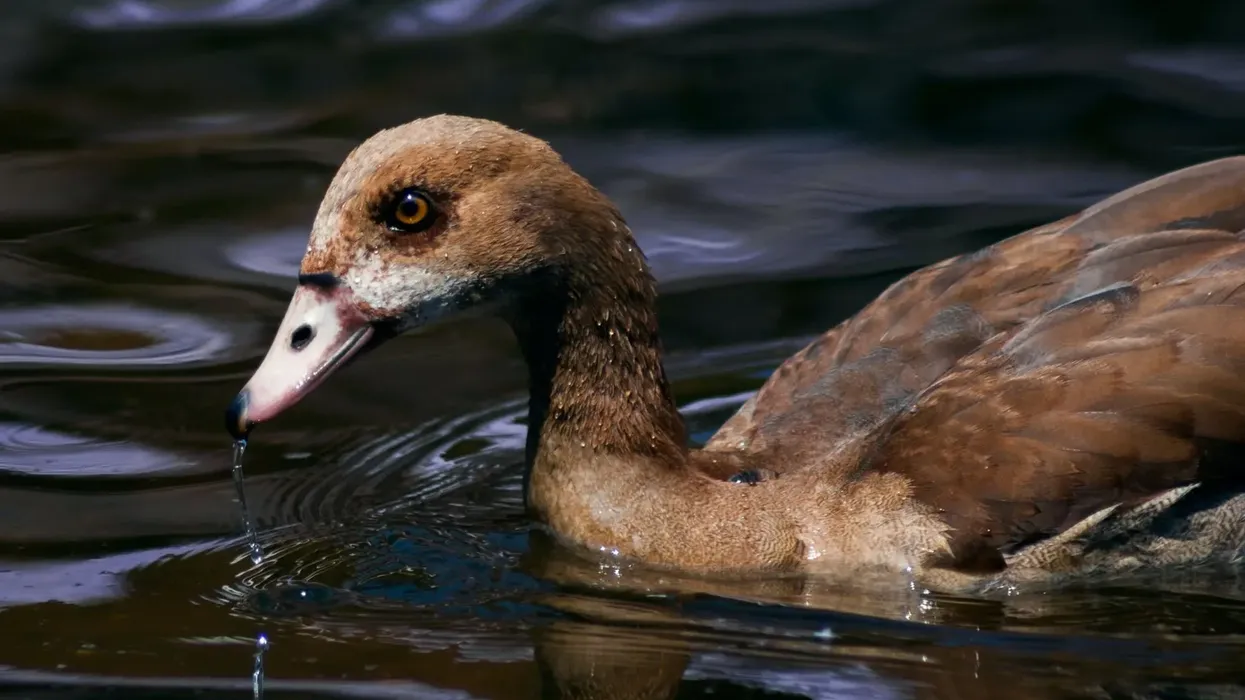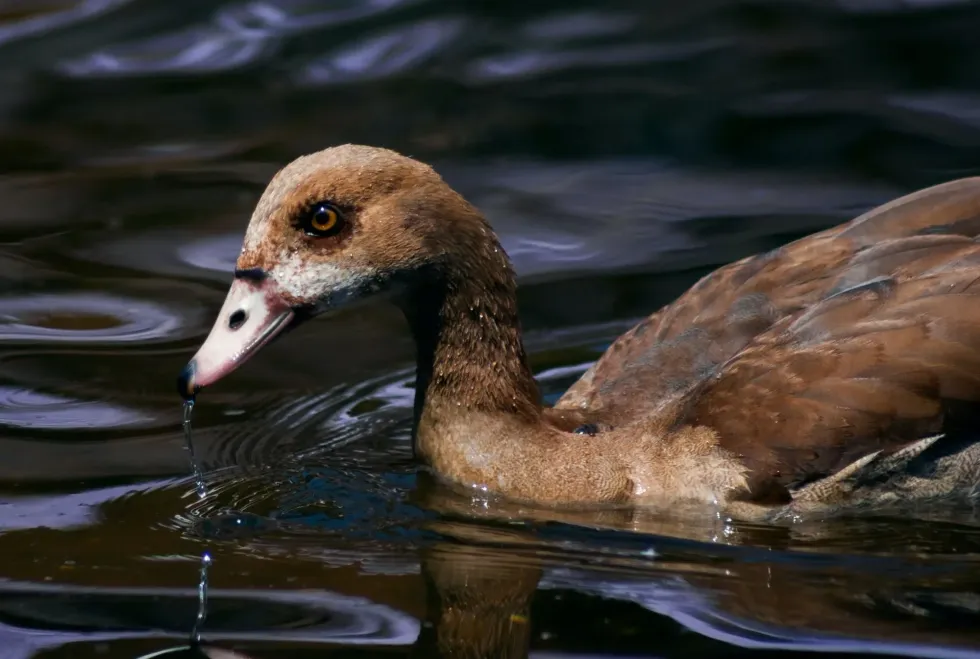There are ample examples of birds and animals going extinct in the wild due to hunting pressure and habitat loss. Add to that list the pink-headed duck (Rhodonessa caryophyllacea), a Critically Endangered waterfowl with limited evidence of its present existence.
The pink-head duck (Rhodonessa caryophyllacea) is a large-sized diving duck that used to be locally distributed in the Gangetic plains of India and the wetlands and swamps of Myanmar and Bangladesh.
Always considered a rare species, the pink-headed duck was last seen in the wild in 1949, as later reports of pink-headed duck sightings were just false alarms, often arising from confusing these birds with the red-crested pochard (Netta rufina).
With a characteristic deep pink head, long neck, and notable wing patch, the wild population of this duck species that lived in floodplains, swamp regions, and wetland habitats is believed to have declined due to hunting, habitat loss, and habitat alteration by the invasion of the alien species, water hyacinth.
Read on to know more about this rare and enigmatic waterbird species. For more relatable content, check out these ostrich facts and crowned eagle facts for kids too.
Pink-Headed Duck Interesting Facts
What type of animal is a pink-headed duck?
The pink-headed duck (Rhodonessa caryophyllacea) is a rare species of large diving duck.
What class of animal does a pink-headed duck belong to?
Pink-headed ducks belong to the class Aves which includes all birds.
How many pink-headed ducks are there in the world?
According to the International Union for Conservation of Nature (IUCN) Red List of Threatened Species, the remaining population size of this duck species is assumed to be very small, with only between one and 49 mature wild individuals. False sight reports and the failure of surveys hinder the assessment of the population trend of this duck.
Where does a pink-headed duck live?
Pink-headed ducks mostly live in wetland sites, swamps, floodplains, tall, thick elephant grasslands, and over-grown still-water pools.
What is a pink-headed duck's habitat?
Pink-headed ducks usually inhabit enclosed and secluded water bodies surrounded by thick vegetation. In the winters, we may find them in lagoons adjoining rivers.
In India, the habitat of pink-headed ducks included areas north of the Ganges and regions to the west of the Brahmaputra River, particularly the Indian districts of Singhbum, Purulia, Madhubani, Purnea, and Malda.
It has been suggested that pink-headed ducks may still exist in the Kachin state in northern Myanmar, including around the oxbow lakes and wetlands around Indawgyi Lake and the seasonally inundated grasslands of Nawng Kwin. However, later searches failed to provide any concrete evidence of the continued existence of these birds in these areas.
Who do pink-headed ducks live with?
Secretive and shy, the pink-headed duck species appears to prefer a low-key lifestyle, evident from its secluded habitats and rare sightings. These birds were occasionally sighted in small groups or flocks of 30-40 individuals, except during the breeding season.
How long does a pink-headed duck live?
Due to the extremely small population size, poor searches, and confusing reports of pink-headed duck sightings, no data is available on the lifespan or longevity of this bird species.
How do they reproduce?
The breeding season of the pink-headed duck in the wild usually commences in the month of April. During this time, the birds are either seen alone, in pairs, or in small aggregates of around 10 individuals.
Their breeding nest is made of feathers and dry grass, it is usually built close to the water and is in the center of tussocks of high grass.
Female ducks may lay up to nine eggs each breeding season that are attended to by both male and female parents. However, unlike the eggs of most other duck species, the eggs of these birds are spherical and are either pale yellow or pale white in color.
What is their conservation status?
According to the International Union for Conservation of Nature (IUCN) Red List of Threatened Species, these birds of South East Asia are Critically Endangered.
Pink-Headed Duck Fun Facts
What do pink-headed ducks look like?
Like most other bird species, the male duck stands out from the female and has a deep pink head. Not just the head, even the sides and the back of the head are a shade of rosy pink.
The head of female ducks is a pale grayish pink color. The throat is brown, and the rest of the body is a glossy shade of dark brown with paler undersides.
The dark color of the body extends onto the front of the neck as a thin strip.
The body of a female is duller brown. Males have a pink bill, and a female's bill is pale pink.
The wings of both genders have a whitish edge, and the speculum (a colored patch on the secondary wing feathers of duck species) is of a reddish tone with a white band.
The physical appearance of the pink-headed duck is often confused with that of other swimming birds, such as the red-crested pochard, who also has a prominent red head, but of a shade starkly different from the pink-headed ones.

*Please note that this is an image of a domestic duck, not a pink-headed duck. If you have an image of a pink-headed duck please let us know at hello@kidadl.com.
How cute are they?
From the very few sightings of this bird, the pink-headed duck with its graceful long neck seems to be more beautiful than cute. Its pink-colored head adds a splash of color to its otherwise brown body and makes these birds stand out from other duck species.
How do they communicate?
Not much is known about how these ducks communicate. However, males are known to produce weak whistles, and females give out low quacks.
Soft, two-note calls of 'wugh-ah' have also been associated with this duck species. Pink-headed duck males observed in the aviaries of Europe displayed a typical behavior of puffing the feathers of their neck, followed by lowering their neck and then stretching their neck back up with the accompaniment of a wheezy whistle, like the mallard duck.
How big is a pink-headed duck?
Both male and female pink-headed ducks that are seen in the wild range in size between 16.1-17 in (41-43.2 cm). They are slightly smaller than harlequin ducks.
How fast can a pink-headed duck move?
Due to the extremely small population size and lack of legitimate sightings, no information is available on how fast a pink-headed duck moves or swims.
How much does a pink-headed duck weigh?
A pink-headed duck supposedly weighs between 28-48 oz (0.8-1.4 kg). They are lighter than the Muscovy duck and in a similar weight range to the ring-necked duck.
What are their male and female names of the species?
Most male ducks are called drakes, and female ducks do not have a distinct name.
What would you call a baby pink-headed duck?
Like most other duck species, a baby pink-headed duck would be called a duckling.
What do they eat?
The diet of the pink-headed duck seems to consist of mollusks and water plants. Evidence from a dead bird's gizzard has shown traces of small shells and water weeds. While procuring food, these birds are not known to dive, but rather dabble.
Are they poisonous?
The pink-headed duck is not known to be poisonous or particularly dangerous.
Would they make a good pet?
Ducks are generally known as good domestic waterfowl animals. However, the sheer rarity of the pink-headed duck makes it difficult to judge its capacity to be a good domestic pet.
Did you know...
In 1988, Shankar Barua of Delhi and an American birder, Rory Nugent, supposedly spotted the pink-headed duck amidst other waterbirds on the banks of the River Brahmaputra. However, their sightings are not widely accepted as legitimate.
The pink-headed duck was so elusive and uncommon that in the year 1923, Calcutta resident Sir David Ezra offered a reward for live specimens of the pink-headed duck.
In fact, over the next six years, he sent around 16 live birds to his brother Alfred's menagerie at England's Foxwarren Park, putting further pressure on the already sparse population of these ducks.
The only available photographs of the pink-headed duck species were taken at the menagerie of Alfred Ezra at England's Foxwarren Park and another was taken by David Seth-Smith in or around the year 1925.
The last specimen of the pink-headed duck was obtained by C.M. Inglis in 1935 in the Darbhanga district of the Indian state of Bihar.
In 1790, John Latham described the pink-headed duck under the genus Anas and referred to paintings of the bird collected by Mary Impey, the wife of Sir Elijah Impey who was the Chief Justice of the Calcutta Court during the period 1774-1783.
Why did the pink-headed duck become extinct?
It is not quite clear if the pink-headed duck is extinct in the wild, but the decline in its population has been primarily attributed to habitat loss.
The massive clearing of forests and the conversion of wetlands for agricultural purposes have both severely destroyed the habitat of these waterbirds. Further, the occurrence of invasive species of aquatic plants such as water hyacinth only adds to these woes, altering large swathes of wetlands.
Egg collection and hunting pressure are also believed to be possible causes for their population decline, particularly in the 19th and early 20th centuries in India, when hunting levels were excessively high.
Proposed protection measures include a satellite survey of the possible habitats of the pink-headed duck, particularly in its former range that includes the states of Assam and Bihar in India, Rakhine, Kachin, and Chin states of Myanmar. The rediscovery of these birds must be reinforced with stringent conservation efforts to save any remaining members of the population.
When was the last pink-headed duck sighting?
There has been no conclusive sighting of the pink-headed duck in the wild since 1949.
Here at Kidadl, we have carefully created lots of interesting family-friendly animal facts for everyone to discover! Learn more about some other birds from our great green macaw facts and southern cassowary facts pages.
You can even occupy yourself at home by coloring in one of our free printable pink headed duck coloring pages.
*Please note that the main image is of a brown duck, not a pink-headed duck. If you have an image of a pink-headed duck please let us know at hello@kidadl.com.









